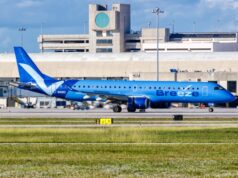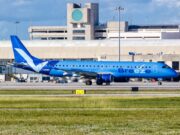
Fatigue is a silent threat within aviation. Some of the effects of fatigue include loss of situational awareness, impaired coordination and spatial disorientation, as well as decreased ability to communicate. For decades, the FAA has advised pilots to conduct a preflight risk assessment intended to evaluate their level of fatigue prior to flight. The popular “IMSAFE” checklist is a convenient method for self-assess fitness for flight. A fatigued pilot should never feel pressured to fly, regardless of experience level. Anti-fatigue programs should always be non-punitive, allowing voluntary self-disclosure. The data gathered by these programs can be particularly useful in analyzing trends and problem areas, such as insufficient crew rest and scheduling deficiencies. Nonetheless, many pilots choose not to self-disclose fatigue fearing negative employment repercussions or reduced pay. The following discussion will analyze the current fatigue programs mandated by the FAA, while proposing improvements to identified weak areas.
Prevention is the most important tool against fatigue. While air carriers provide pilots with plenty of windows for rest, the pilot is ultimately responsible for taking advantage of the opportunities. Stress at home, personal factors, as well as commuting must be accounted for as potential causes of fatigue outside the workplace. Prior to beginning a trip pairing, pilots are required to attest that they are not fatigued by signing a fit-for-duty agreement. With this being the case, why are fatigued pilots still flying? Why do fatigue-related accidents still occur?
The main reason behind the failure of anti-fatigue programs is the hazardous “invulnerability attitude.” Fatigue is insidious, and according to the FAA Risk Management Handbook, “. . . may not be apparent to a pilot until serious errors are made.” Spatial disorientation is especially common under IFR when visual cues are lacking. The correlation is undeniable. IFR flight requires increased alertness and attention to flight instruments. A fatigued pilot experiences degrading instrument monitoring and scanning skills, thereby potentially leading to experiencing loss of aircraft control. The Pilots Handbook of Aeronautical Knowledge extends the following recommendation to avoid spatial disorientation: “Be physically tuned for flight into reduced visibility. Ensure proper rest, adequate diet. . .” Remember that illness, medication, alcohol, fatigue, sleep loss, and mild hypoxia are likely to increase susceptibility to spatial disorientation.
What are operators doing to address fatigue? Per the Airline Safety and Federal Aviation Administration (FAA) Extension Act of 2010, each air carrier operating under Part 121 must have a Fatigue Risk Management Plan (FRMP). This requirement includes the development of a fatigue reporting system, fatigue education and awareness training, and a system to monitor fatigue. When a report is submitted under the “fatigue” classification, the carrier must capture all relevant information leading to such report. The schedule of the pilot, environmental conditions, health or medical conditions, are all evaluated.
Although all the reports should be de-identified, information sharing is fundamental. De-identified reports disseminated as safety newsletters among the pilot groups achieves the goal of raising awareness and educating. In addition, different risk groups must be identified (such as short-haul, long-haul, ultra-long-haul pilots). Each of these pilots have different reporting times, shift durations, number of legs, among other elements inherent to their specific operations. Short-haul pilots have higher workloads on a day-to-day basis, while long-haul crewmembers experience circadian disruptions caused by multiple time zones. According to FAA AC 120-100, long-haul pilots are awake for longer than 20 hours, while short-haul pilots can be scheduled for four to five legs per day. On the other hand, cargo pilots tend to fly night schedules, while corporate pilots face various scheduling issues such as late arrivals, early awakenings, and multi-segment flights.
A one-size-fits-all program is inadequate. Automated processes capable of forecasting fatigue-related risk are widely utilized for crew scheduling purposes. These systems focus on improving layover sleep opportunities, circadian shifts, and jet lag. However, they have intrinsic limitations. According to AC 120-100, current predictive fatigue models assume that the person “. . . requires about eight hours of sleep per night to remain fully rested and has a regular circadian rhythm that favors neither the morning nor the evening for peak cognitive alertness.” Operators must recognize that each person acts and behaves differently. Therefore, future models should be focused on tailoring fatigue models to specific individual demographics and sleep patterns. The FAA further states: “Sleep estimation assumptions that work well for one group of workers may not work well to predict sleep in another group of workers.”
As evidenced, even mathematical forecasting models have their own limitations. In my opinion, rather than automatizing processes, we have to revert to the human element – awareness. Recurrent training events under Part 121 (both online and in-person simulator training) provide the opportunity to demonstrate the consequences of spatial disorientation. For general aviation pilots, staying informed is equally as important. The FAA’s Pilots Handbook of Aeronautical Knowledge explains the steps a pilot could take when experiencing acute fatigue: “Acute fatigue can be prevented by proper diet and adequate rest and sleep. Adequate rest maintains the body’s store of vital energy.” (FAA, 2016). It becomes evident that fatigue avoidance and mitigation starts at home as a multi-disciplinary exercise.
In conclusion, accurate fatigue forecasting is not always feasible. Mathematical forecasting tools designed to improve pilot scheduling have inherent limitations linked to individual demographics. Pilots who suspect they are experiencing fatigue should ground themselves, regardless of external pressures. Under the air carrier operations category, dedicated fatigue groups focused on data analysis can help identify causes and mitigation strategies. All pilots, regardless of their line of work, should follow a systematic fitness preflight assessment such as the IMSAFE checklist. Because fatigue is sometimes insidious and difficult to recognize, adhering to an active lifestyle with adequate rest is imperative. By following a systematic approach, fatigue could be largely avoided, therefore preventing the risks of spatial disorientation, decay in situational awareness and degradation of one’s ability to communicate.
Works Cited
Allen, J. (2010). Basics of Aviation Fatigue (Vol. AC 120-100, pp. 1-22) (United States, Federal Aviation Administration). Washington, DC: FAA. Retrieved August 08, 2020, from https://www.faa.gov/documentLibrary/media/Advisory_Circular/AC%20120-100.pdf.\
Duncan, J. (2016). Aeromedical Factors. In Pilot’s Handbook of Aeronautical Knowledge (pp. 17-2-17-30). Washington, D.C., DC: U.S. Dept. of Transportation, Federal Aviation Administration., Flight Standards Service. doi:https://www.faa.gov/regulations_policies/handbooks_manuals/aviation/phak/media/pilot_handbook.pdf
Identifying and Mitigating Risk. (2016). In Risk management handbook (pp. 3-3-3-4). Washington, DC: Federal Aviation Administration, U.S. Department of Transportation. doi:https://www.faa.gov/regulations_policies/handbooks_manuals/aviation/media/faa-h-8083-2.pdf
Whitaker, M. (2013, August 7). Preventing Fatigue is a Joint Responsibility. Retrieved August 08, 2020, from https://www.faa.gov/news/speeches/news_story.cfm?newsId=15014





















































































































